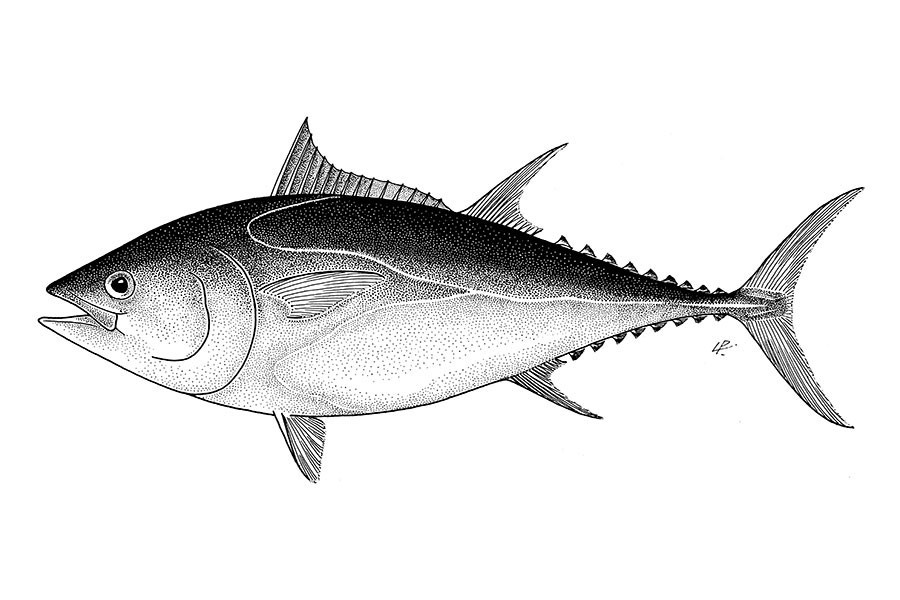Underwater Cameras
Discover the wonders found in our waters!
The Department of the Environment, Climate Change & Sustainability launched the Gibraltar Nature Cameras project in 2015 with the installation of an underwater camera in the Rosia ‘no take/no fishing zone’ (known locally as the Seven Sisters). It provides users with an insight into Gibraltar’s underwater environment’s flora and fauna as well as vital scientific data on fish species richness and abundance. The camera also provides unprecedented data on the effects of declaring a ‘no take/no fishing zone’. This live underwater camera is the first of its kind in Europe, providing a real time video link to Gibraltar’s rich and diverse underwater environment.
Illustration Source: Food and Agriculture Organization of the United Nations. Reproduced with permission.
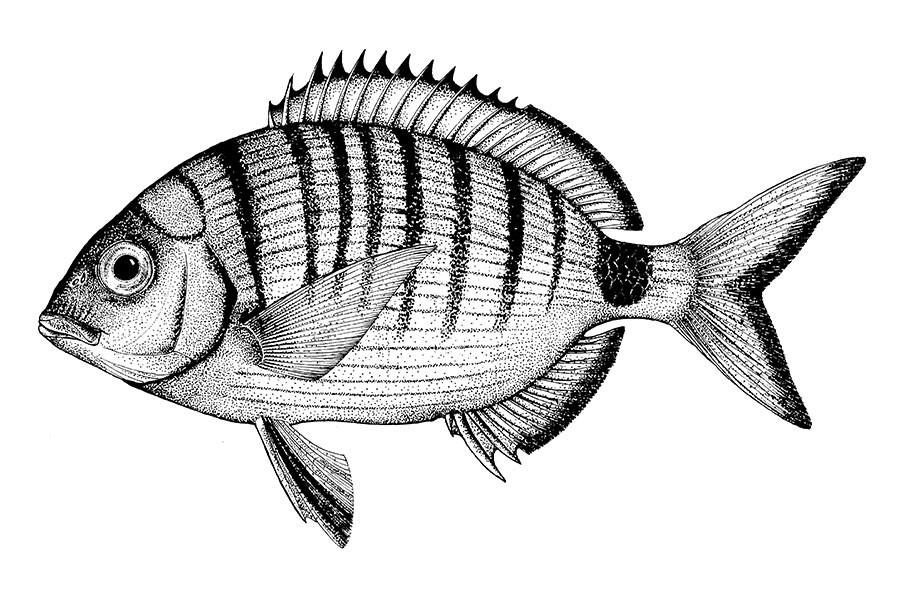
White Seabream
Diplodus sargus sargus
APPEARANCE
This species is very similar to the Sheepshead Bream for which it is often mistaken. Silvery grey in colour with a darker snout. In this fish, there is a black spot at the body side of the tail joint and there are about seven faint, dark vertical stripes down the body and a broad black band at the base of the tail.
HABITAT AND DISTRIBUTION
Frequently seen in large shoals and on littoral waters on rocky bottoms and sand close to rocks, to 50m in the Mediterranean.
Gilthead Bream
Sparus aurata
APPEARANCE
Body oval, rather deep and compressed. Head curved. Colour silvery grey; a large black blotch at start of lateral line extending on upper margin of gill covers where it is edged below by a reddish area; a golden frontal band between eyes edged by two dark areas (not well defined in young individuals); dark longitudinal lines often present on sides of body; a dark band on dorsal fin; fork and tips of caudal fin edged with black.
HABITAT
Common throughout the Mediterranean. A coastal species, inhabiting seagrass beds, rocky and sandy bottoms as well as in the surf zone.
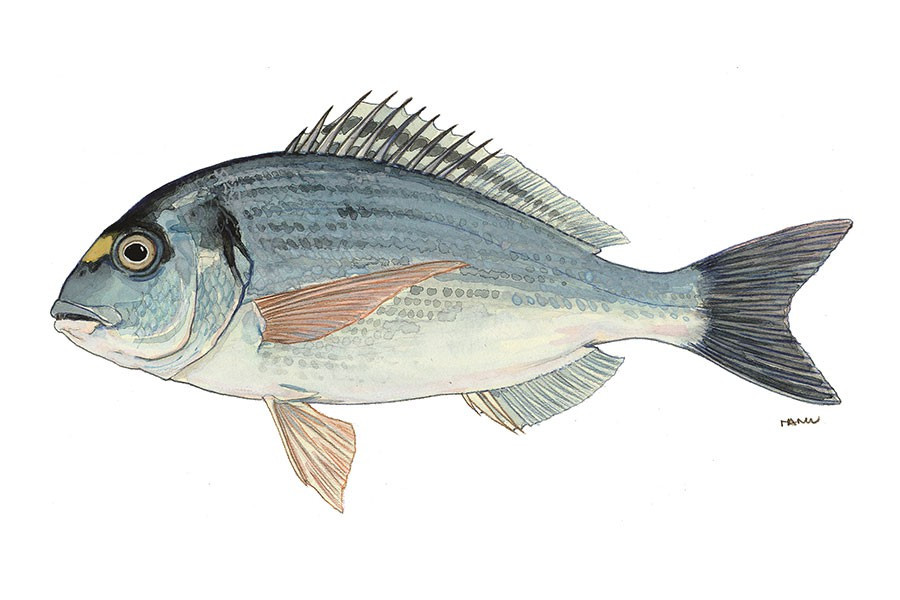
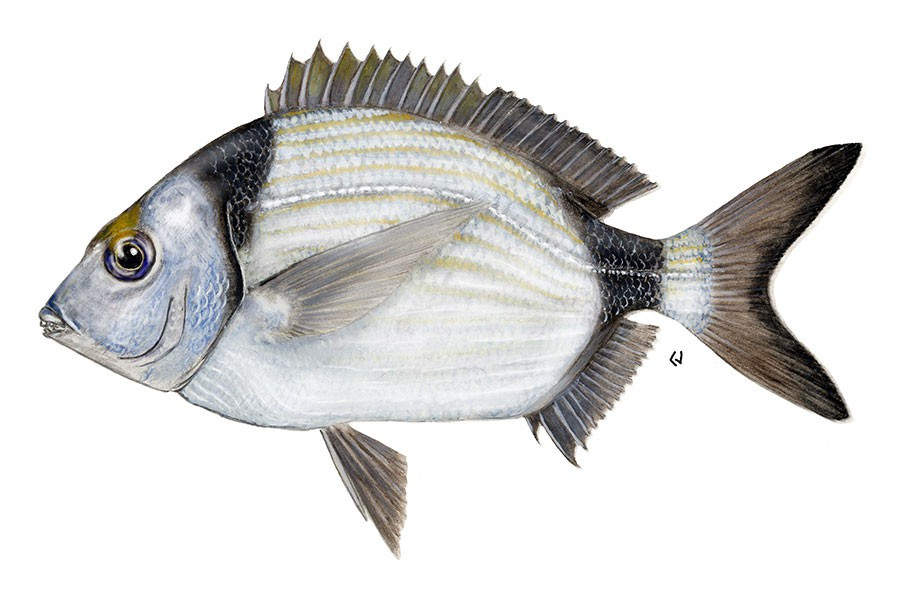
Two-banded Seabream
Diplodus vulgaris
APPEARANCE
Generally grey, brownish to greenish in colour. The most recognized of the bream, it has two distinctive, vertical, black bands, one behind the eyes, the other before the tail. It has a large head and prominent eyes and numerous yellow lines run the length of its body.
HABITAT AND DISTRIBUTION
They live close to shore over muddy and sandy bottoms in the vicinity of rocks and harbour walls.
Common Seabream
Pagrus pagrus
APPEARANCE
Typical bream shape with large head and steep profile. Silvery pink, head darker from mouth to nape. Caudal fin is dark pink, a dusky area often present at the pectoral axil and the tail is white tipped.
HABITAT
Inshore waters on hard or sandy bottoms.
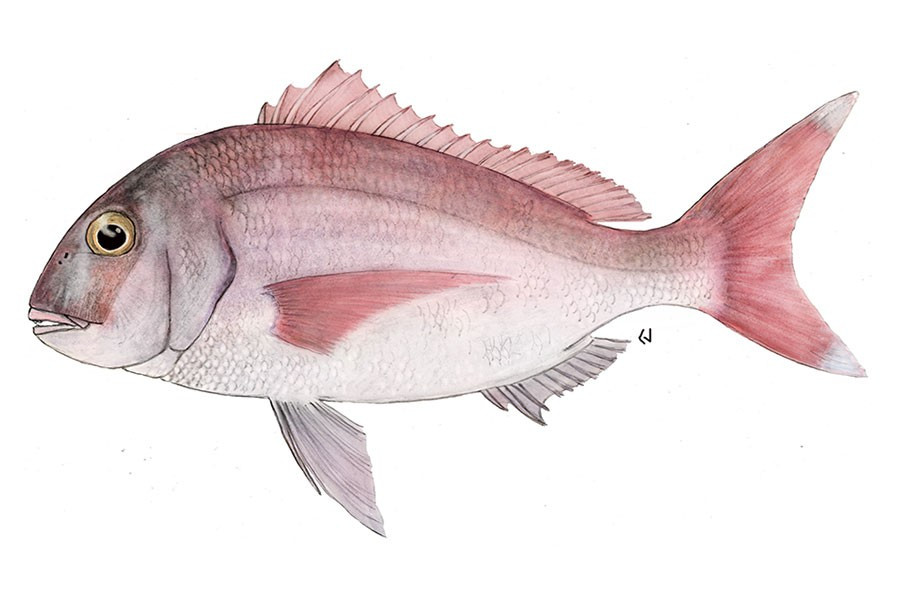
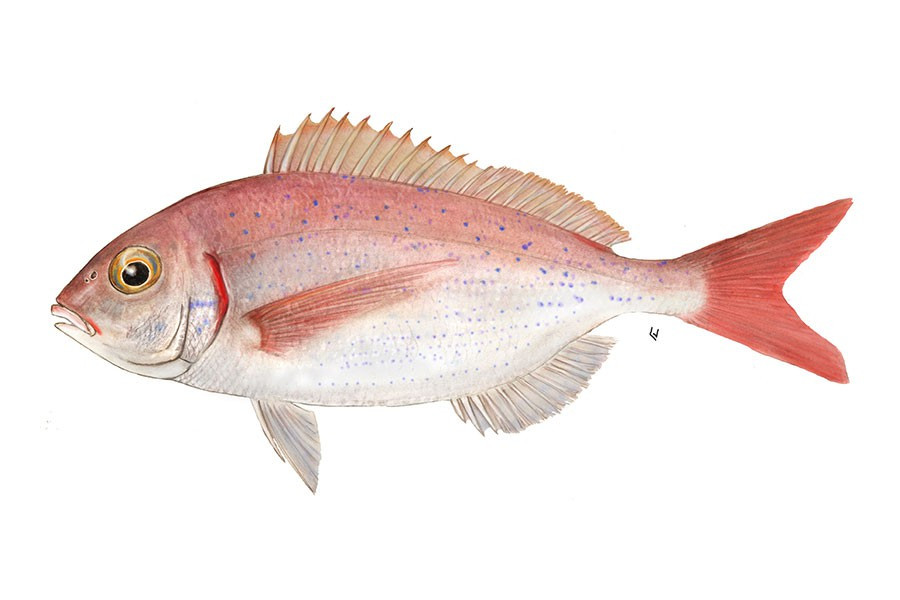
Pandora's Bream
Pagellus erythrinus
APPEARANCE
Pink Bream with bluish flecks on its back and a reddish spot on pectoral base and sometimes a dark red mark at bases of last dorsal rays. Body oblong and upper profile of head straight and conical snout.
HABITAT
Inshore waters, on various bottoms (rocks, gravels, sand, mud) to 200m (Mediterranean).
Black Bream
Spondyliosoma cantharus
APPEARANCE
Deep oval-shaped body with a small head. Dark greyish brown or blue back with golden longitudinal lines.
HABITAT
Live in large shoals over muddy and sandy bottoms in inshore waters.
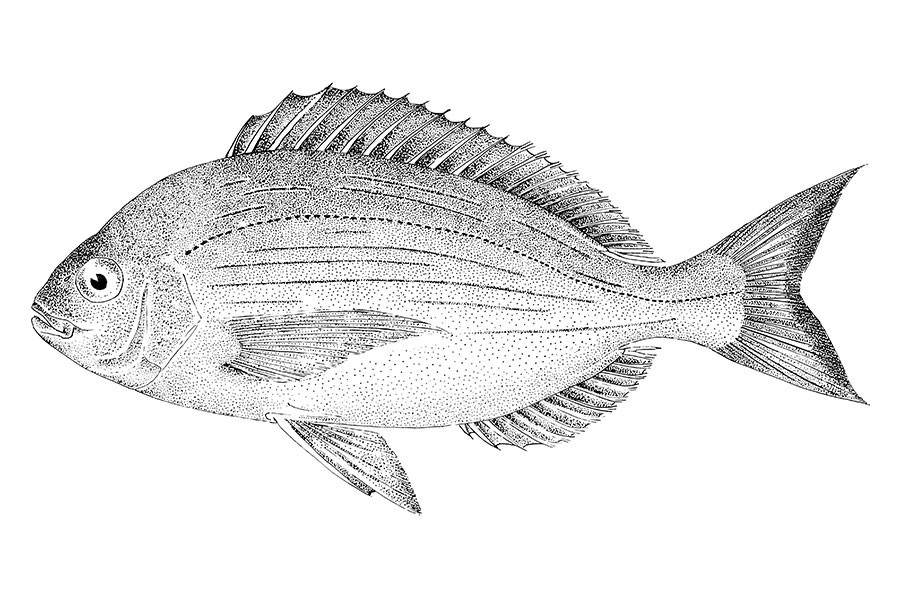
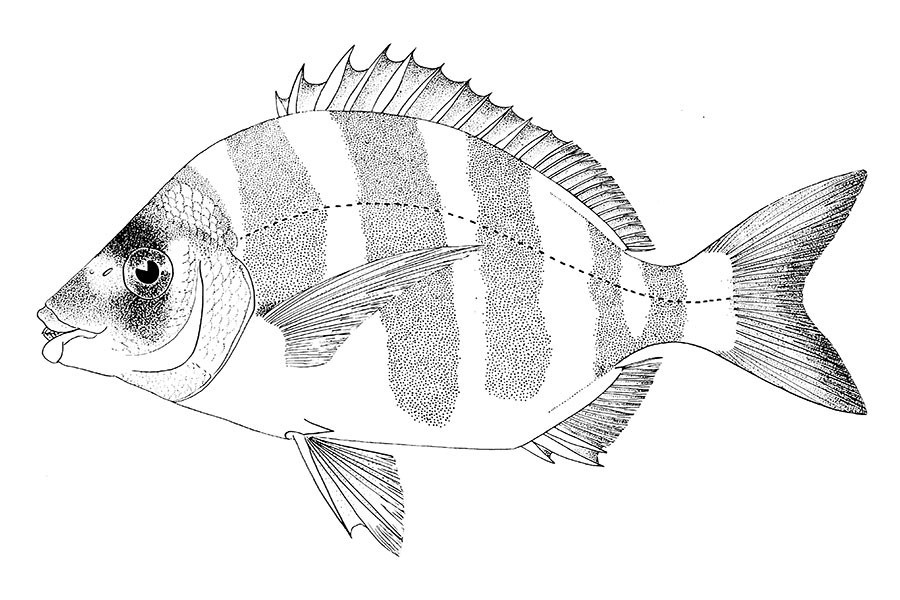
Soldier Seabream
Diplodus cervinus cervinus
APPEARANCE
Strikingly coloured bream with five or six vertical bands of dark brown against a cream coloured body. Snout rather conical and lips thick.
HABITAT
Inshore waters, on rocky bottoms (Atlantic 5-80m) and also muddy bottoms (Mediterranean 5-300m).
Atlantic Bluefin Tuna
Thunnus thynnus
APPEARANCE
Large pelagic species. Second dorsal fin higher than first dorsal; pectoral fins are very short, never reaching the interspace between the dorsal fins. Lower sides and belly silvery white with colourless transverse lines alternated with rows of colourless dots; first dorsal fin yellow or bluish; the second reddish-brown; anal fin and finlets dusky yellow edged with black.
HABITAT
Usually oceanic but seasonally coming close to shore.
